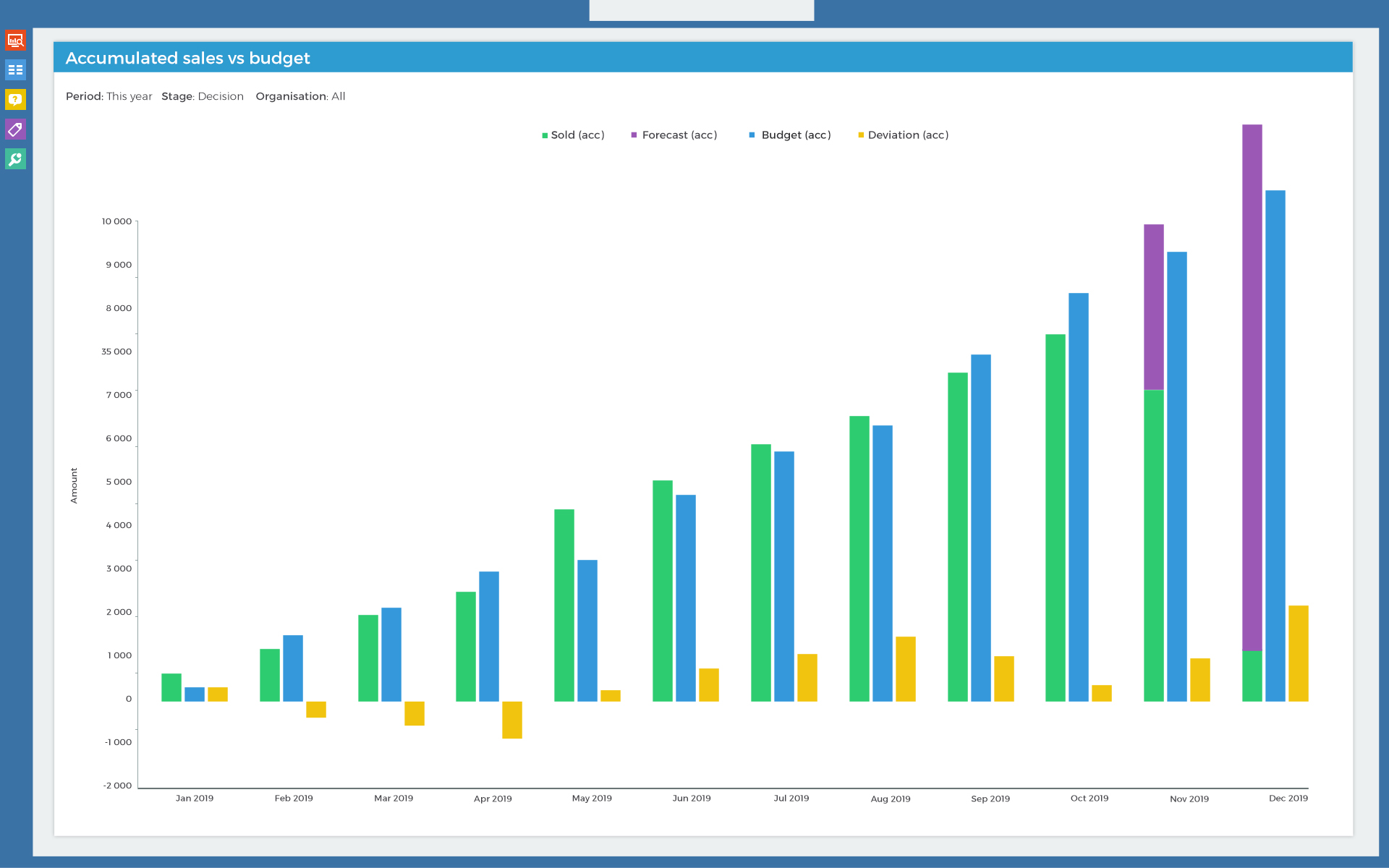The Business Analytics Guide for B2B Organisations

If you’re curious about business analytics (or Business Intelligence) and wonder how analytics tools can benefit your organisation, you’ve come to the right place.
This guide provides straightforward, non-technical answers to important questions including:
- What is business analytics?
- Why is it used?
- How do I get started?
What is business analytics?
Business analytics is a group of methods and tools used to analyze and visualize data.
Business analytics tools pull various sources of data, like those stored within CRM, ERP, customer support, project management system or other database, into one place for analysis.
This saves business users from having to extract and format data into reports before they can use it as part of their daily work.
Different analysis tools have different levels of sophistication, but the goal of business analytics tools is to present data in a way that is easy to use and understand.
Business analysis software enable you to sort, group, filter, segment and chart data. It may also include more advanced analysis like statistical modelling, predictive modelling and forecasting. The results are displayed on dashboards.
Dashboards are useful because they make data easy to access and share. Dashboards contain lists, charts, graphs and other types of data visualizations.
Users login to dashboards through a web browser or app.
Above: Example of a sales dashboard
One key advantage of dashboards is users can easily navigate multiple hierarchies of data using ‘drill-downs’ and ‘roll-ups.’
A drill-down refers to the process of viewing data at a level of increased detail, while roll-up refers to the process of viewing data with decreasing detail.
Why use business analytics?
In B2B organisations of all sizes, business analytics is used to gain insight and understanding about business. This leads to better decision-making and higher levels of performance.
As the volume of data within companies grows, more businesses are turning business analytics.
IDC forecasts double-digit revenue growth through 2022.
5 reasons to use business analytics
Business analytic tools provide different information to different parts of the organisation.
CEOs and management teams, for example, see company-wide data and monitor KPIs (key performance indicators). Departments track the metrics which are important to their success.
What key company, sales, and support metrics can you track? See examples.
What are the differences from spreadsheets?
While spreadsheets are similar to business analytics tools in some ways, they are very different in others.
Spreadsheets help you analyze data but they aren’t built to gather data or keep it updated.
Some of the advantages of business analytics compared to spreadsheets include:
- Always up-to-date – Analytics tools keep dashboards updated as new data is gathered.
- Easy navigation – Modern, cloud-based dashboards are easy to navigate and can be accessed from any location.
- Consistency – There is only one version of dashboard reports and less risk of human error.
- Easy to share – Dashboards provide users with access to relevant information from any device.
- Secure – Because data is stored in a database and accessed through secure login, business analytics tools secure data in ways that spreadsheets can’t.
How to get started
The easiest way to start is to measure and track one or two of your most important company targets.
You will be able to see day to day progress and you can keep your organization updated and motivated without paperwork or administration.
Here are a few tips:
- Select your most important goals or KPIs. e.g. 20% revenue growth
- Connect to data.
- Visualize and share progress to keep focus
- Use dashboards and scoreboards to motivate
You can add more information and do deeper analysis as you go.
Once you get used to having insights at your fingertips, you won’t be able to manage without.






